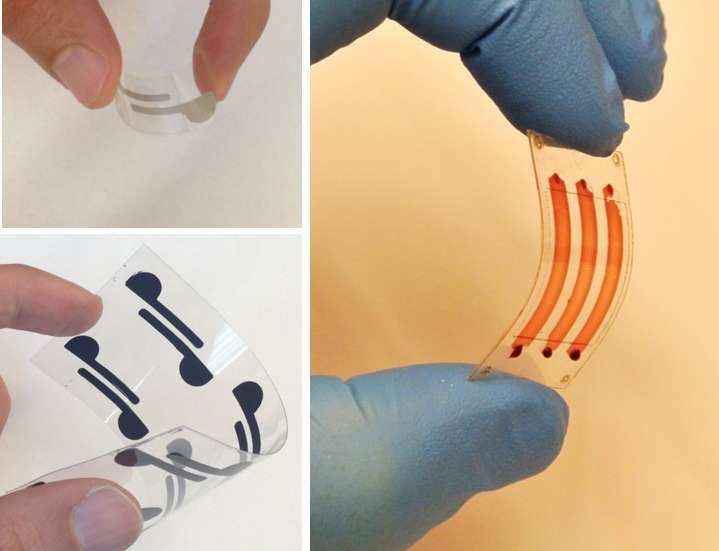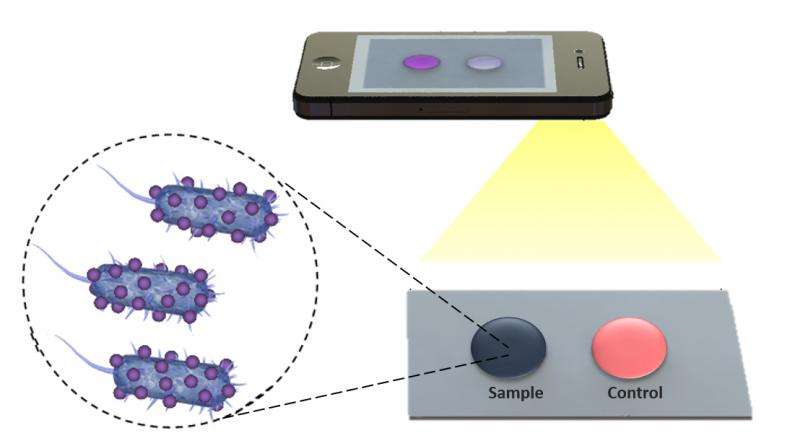New biosensing platform could quickly and accurately diagnose disease and monitor treatment remotely

In much the same way that glucometers and pregnancy tests have revolutionized in-home diagnostic testing, researchers from Florida Atlantic University and collaborators have identified a new biosensing platform that could be used to remotely detect and determine treatment options for HIV, E-coli, Staphylococcus aureas and other bacteria. Using a drop of blood from a fingerprick, this novel biosensing platform provides clinically relevant specificity, sensitivity and detection of pathogens from whole blood and plasma.
The thin, lightweight and flexible materials developed by these researchers can be fabricated and operated without the need for expensive infrastructure and skilled personnel, potentially solving real-world healthcare problems for both developed and developing countries. Using this technology, they also have developed a phone app that could detect bacteria and disease in the blood using images from a cellphone that could easily be analyzed from anywhere in the world.
The research collaborators have published their findings in Nature's Scientific Reports in an article titled "Paper and Flexible Substrates as Materials for Biosensing Platforms to Detect Multiple Biotargets."
In the article, the researchers address the limitations of current paper and flexible material-based platforms and explain how they have integrated cellulose paper and flexible polyester films as new diagnostic tools to detect bioagents in whole blood, serum and peritoneal fluid. They employed three different paper and flexible material-based platforms incorporated with electrical and optical sensing modalities. They were able to demonstrate how these new materials can be widely applied to a variety of settings including medical diagnostic and biology laboratories.

Using paper and flexible substrates as materials for biosensors, Asghar and his colleagues have identified a new rapid and cost-effective way to diagnose diseases and monitor treatment in point-of-care settings. They have been able to show how their new platforms are uniquely able to isolate and detect multiple biotargets selectively, sensitively, and repeatedly from diverse biological mediums using antibodies.
"There is a dire need for robust, portable, disposable and inexpensive biosensing platforms for clinical care, especially in developing countries with limited resources," said Asghar.
Existing paper and flexible material-based platforms use colorimetric, fluorometric and electrochemical approaches that require complex labeling steps to amplify their signal, are very costly to fabricate and also require expensive equipment and infrastructure.
"The future of diagnostics and health monitoring will have potentially cell-phone based or portable readers sipping saliva or blood and continuously monitoring human health taking it way beyond where we are with counting steps today," said Demirci, who is the corresponding author.
Asghar notes that because their materials are easy to make, easy to use, and can easily and safely be disposed by burning, they provide appealing strategies for developing affordable tools that have broad applications such as drug development, food safety, environmental monitoring, veterinary medicine and diagnosing infectious diseases in developing countries.
"Our paper microchip technologies can potentially have a significant impact on infectious diseases management in low- and middle-income countries where there is limited laboratory infrastructure," said Shafiee.
Demirci notes that these platforms could potentially be adapted and tailored to detect other pathogens and biotargets with well-known biomarkers.
More information: "Paper and Flexible Substrates as Materials for Biosensing Platforms to Detect Multiple Biotargets" Scientific Reports 5, Article number: 8719 DOI: 10.1038/srep08719
Journal information: Scientific Reports
Provided by Florida Atlantic University





















